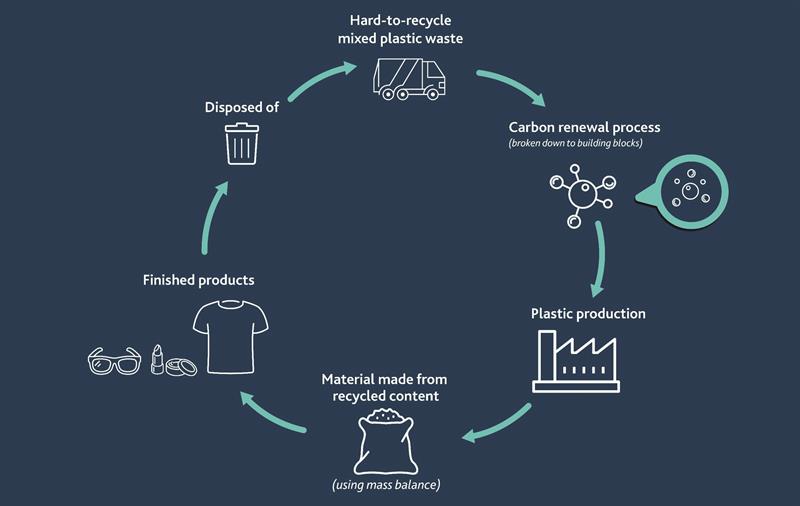
Eastman Chemicals is not one of eyewear’s household names, but it is going to be… once again. The company has been producing the flakes used to make acetate sheets for eyewear manufacturing since the 1930s, but driven by the sustainability challenges facing the industry, recent years have seen the Eastman take steps out of the shadows and into the limelight.
Eastman offers several materials for use in the eyewear sector: Acetate Renew; Tritan Renew and Tenite Renew. As a sector dominated by acetate and wasteful subtractive manufacturing, it is perhaps Acetate Renew that has the biggest impact on the eyewear industry so far, but Tenite and Tritan are also seeing widespread adoption by companies producing injection moulded mass-market eyewear at a lower price point.
Heart of the matter
At its heart, Acetate Renew is Eastman’s carbon renewal chemical recycling technology, which creates a material made from 60% sustainably sourced wood pulp and 40% certified recycled content. Traditional fossil resources are replaced with hard-to-recycle plastics, such as carpets, textiles, and now eyewear industry waste, diverting plastic waste from landfills and incinerators. Eastman says the material offers virgin material performance, something that German eyewear producer Mykita rigorously tested before making the decision to swap all of its traditional acetate for Acetate Renew earlier this year.
Meeting the challenge

Spearheading Eastman’s efforts is eyewear segment manager Rachel Oakley. ‘Eastman has had the technology for a long time, but the company recently started to have another look at the markets that really needed it,’ she says. The disjointed relationship between material suppliers, manufacturers and eyewear brands meant getting the message to those in the industry that could implement change was something of a challenge. ‘We knew if we wanted to get the sustainability message out there, we needed to be talking to the people who were selecting materials for the brands.’ Eastman’s first partnership was with Marchon in 2020 to introduce Acetate Renew into its portfolio, but several others, including Safilo, FGX International and Kenmark, quickly followed suit.
Despite accelerated adoption, Oakley believes effecting change in the eyewear industry is going to take some time. ‘I don’t think it’s going to be quick, but what I hear when I talk to people in eyewear is that we are at the point now where people who’ve done one collection with our products are coming back saying, “I want to do two” and “I want to do three.” To begin with, it was hard work and now it’s just snowballing. In some respects, I think we thought it was going to go quicker at the beginning and now we’re thinking, “Wow, that’s really taken over.”’
But brands are likely to speed up this change even further due to consumer demand. ‘Many eyewear brands are related to an apparel brand or clothing brand, and there’s an awful lot of pressure on fashion to clean up its act,’ she says. ‘Take Levi’s, for example. As a power brand, they’ve got their own sustainability principles and they must go across the entire product range. They needed a sustainable material and Tenite Renew meets their needs for the brand.’
Oakley is clear on what she’s trying to achieve in her role. ‘My goal was always to get everybody to switch materials,’ she says. But what about scale? Is that a concern? ‘I know how big the industry is and I know what our capacity is. It’s not something that worries us. We have essentially got a technology where we can produce at scale without any change in quality.’
